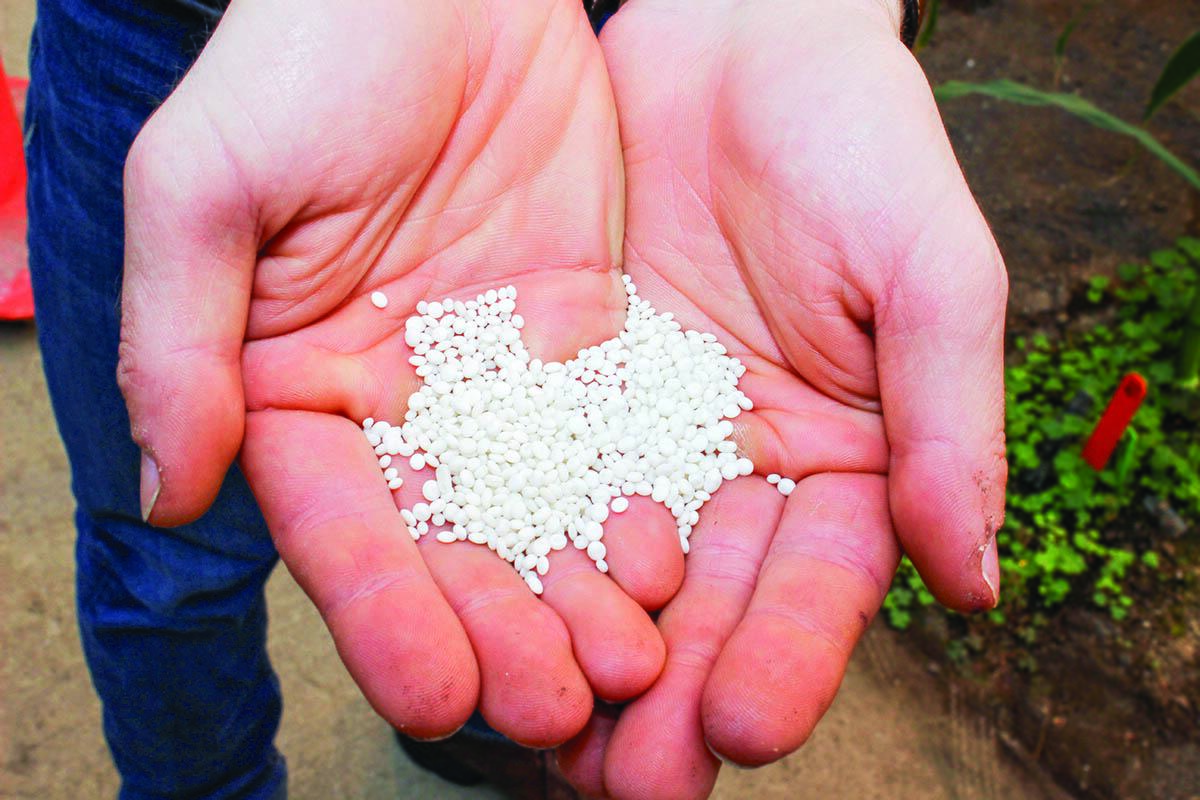Illinois study proposes circular phosphorus economy for Midwest

URBANA, Ill. – The U.S. Midwest produces at least a third of the world’s corn and soybean supply each year. Feeding the world requires a lot of fertilizer, mostly in the form of nitrogen and phosphorus. While nitrogen can literally be pulled out of the air, phosphorus has to be mined from finite phosphate rock reserves and treated to be made available to plants. Most of the world’s phosphate rock is in Morocco, and at some point these reserves will run out.
Additionally, some of the phosphorus applied to agricultural fields is lost through erosion, carried away with soil particles into waterways, where it joins phosphorus products expelled from wastewater treatment plants, livestock operations, and other point sources. When it builds up in receiving waterways, phosphorus can degrade water quality and contribute to “dead zones” that no longer support aquatic life.
A new Journal of Environmental Quality report from the University of Illinois describes the feasibility of recycling phosphorus on a regional scale in the Midwest, simultaneously solving the problem of an uncertain global supply and minimizing loss from agricultural fields.
“There's a lot of phosphorus being moved around, from fertilizer all the way to sewage. Right now it's mostly a one-way street. It ultimately ends up in waste streams, like septic tanks or effluent from point sources like wastewater treatment plants. But there's a lot of value in that phosphorus. We can capture it and reuse it as a fertilizer,” says Andrew Margenot, assistant professor in the Department of Crop Sciences at Illinois and lead author of the report. “We're trying to make circular something that is currently a one-way trajectory.”
The concept of recycling phosphorus in the Midwest isn’t entirely new. A 2016 study out of Canada first proposed the idea that the U.S. Corn Belt could be fully self-sufficient in its agricultural phosphorus needs if all waste-stream phosphorus was recycled. But the U of I report represents the first time biogeochemists, economists, and engineers have come together to consider the true feasibility of a holistic phosphorus recycling system in the Midwest.
The researchers considered all the waste sources of phosphorus in the United States, and honed in on several that were overlooked in previous thought experiments, including corn ethanol and soybean processing plants. They then focused on the forms of phosphorus flowing through the system, another key aspect not fully captured in previous studies.
Phosphate, a common form of phosphorus in waste streams, is highly soluble in water. To avoid losing it in waste streams, the water can be treated with agents to make phosphate settle out. However, these agents also make phosphate insoluble and therefore less available for uptake by plants.
“There's an inherent tension between the ability to recover phosphorus from wastewater, which renders it insoluble, and its utility as a fertilizer. Insoluble forms won’t dissolve as readily, so they are less immediately useful. That's an agronomic reason why we can't re-use 100% of what’s flowing through waste streams. But we can play with the chemistry of recovery to match the right soil type and crop type,” Margenot says. “We need to consider the context we’re dealing with. We believe we can overcome these challenges by drawing on expertise across scientific disciplines.”
One of the biggest roadblocks to establishing a circular phosphorus economy in the Midwest is the current cost of fertilizer. Pound for pound, phosphorus fertilizer is more expensive than nitrogen, but at the moment, it’s much cheaper than the current cost of recycled phosphorus.
A few Midwestern wastewater treatment facilities are already recovering phosphorus, but it will take major investment and commitment to build up the infrastructure needed to overhaul the entire system. And that doesn’t include the costs required to transport recycled phosphorus from point sources to fields, especially in heavy, wet forms like phytin – an organic-matter-rich sludge left over from soybean processing.
The researchers say phosphorus trading schemes, similar to carbon credits, could be part of the solution.
“In the article, we talk about the possibility of point sources paying farmers to take recovered phosphorus off their hands. Our job as researchers is to show farmers that these alternative phosphorus sources won't compromise crop yields and could save them money on phosphorus inputs” Margenot says.
He points to ongoing field experiments by his lab showing that struvite – an inorganic, granular, slow-release form of phosphorus recoverable from multiple waste streams – can almost completely substitute traditional phosphorus fertilizers without yield loss for multiple crops. The low water solubility of struvite makes it less likely to move from the field into surrounding waterways. These potential water quality benefits are the subject of ongoing study as part of Margenot’s Illinois Nutrient Research and Education Council-funded research project.
Ultimately, the researchers believe a circular phosphorus economy is feasible for the Midwest.
“I think we've overlooked phosphorus a bit in Midwestern systems, where it is often all about nitrogen. But in many ways, phosphorus is easier to deal with than nitrogen. We can trap it and force it to flow through the agricultural production chain in ways that are beneficial to farmers and the environment. Phosphorus is low-hanging fruit,” Margenot says.
The article, “Toward a regional phosphorus (re)cycle in the U.S. Midwest,” is published in the Journal of Environmental Quality [DOI: 10.2134/jeq2019.02.0068]. Authors include Andrew Margenot, Dianna Kitt, Benjamin Gramig, Taylor Berkshire, Neha Chatterjee, Allen Hertzberger, Sammy Aguiar, Aliza Furneaux, Navneet Sharma, and Roland Cusick, from the departments of crop sciences; agricultural and consumer economics; and civil and environmental engineering at the University of Illinois. The departments of crop sciences and agricultural and consumer economics are in the College of Agricultural, Consumer and Environmental Sciences at Illinois.